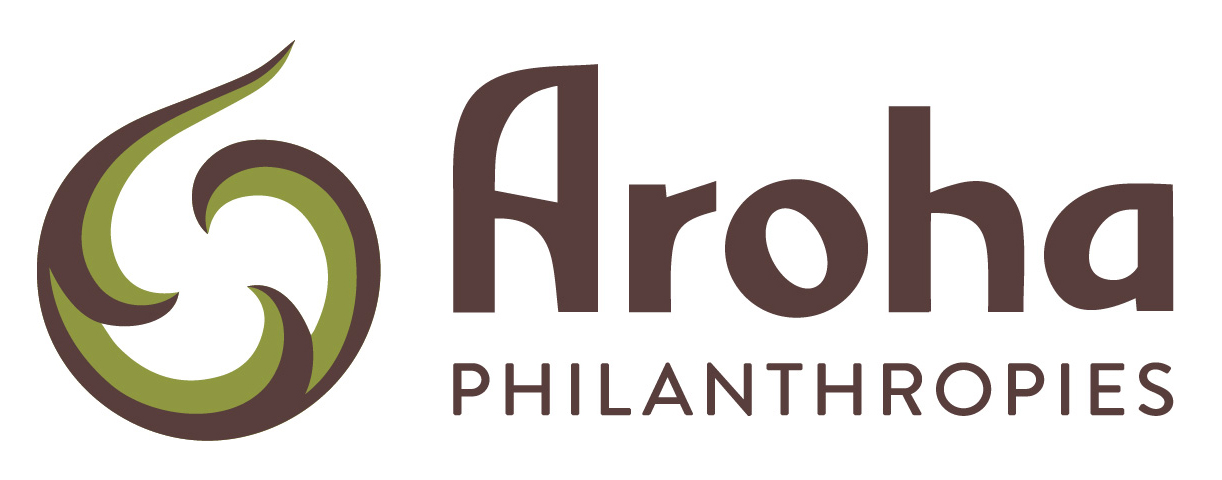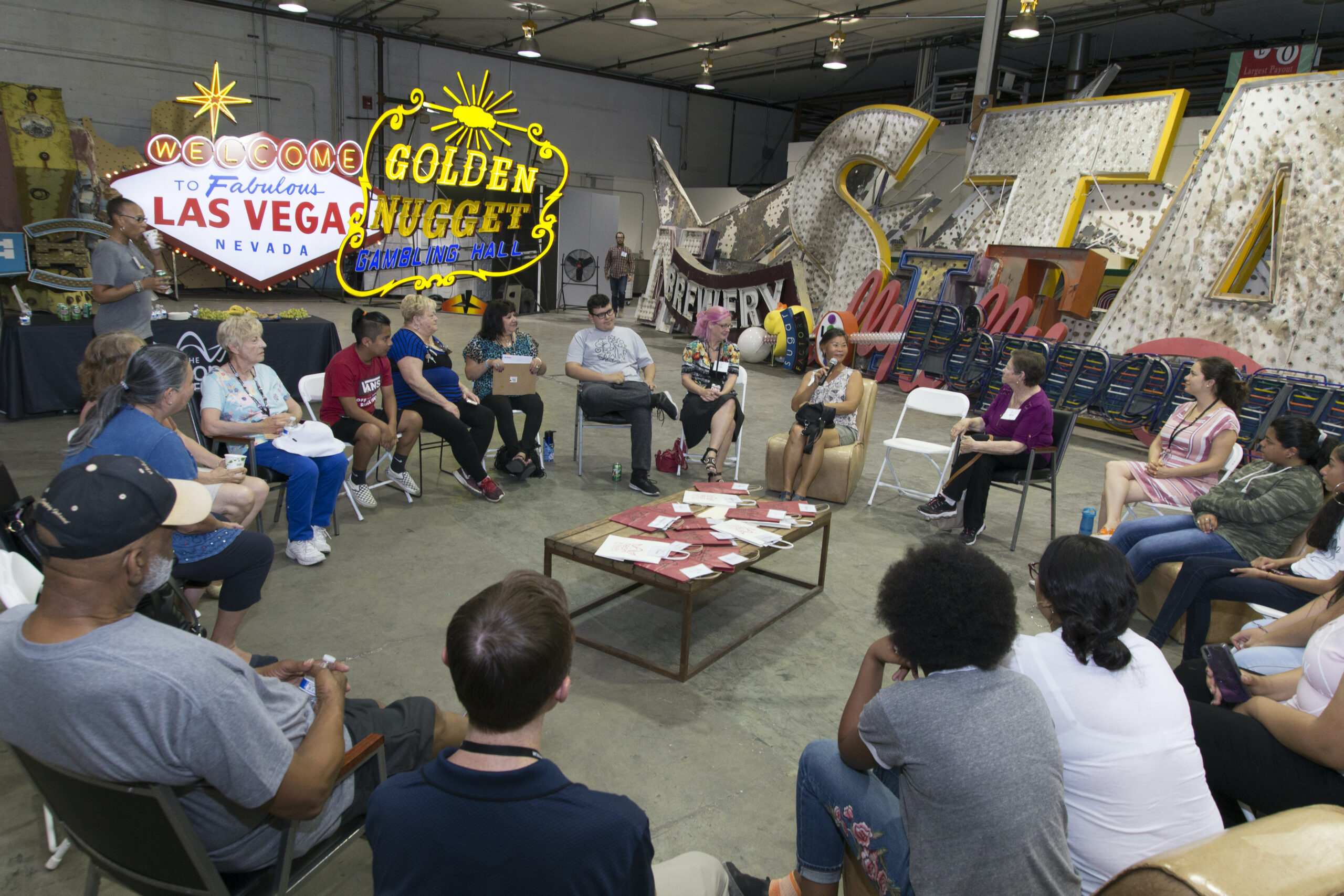Blog
Neon Museum: Visual Arts Workshop Series
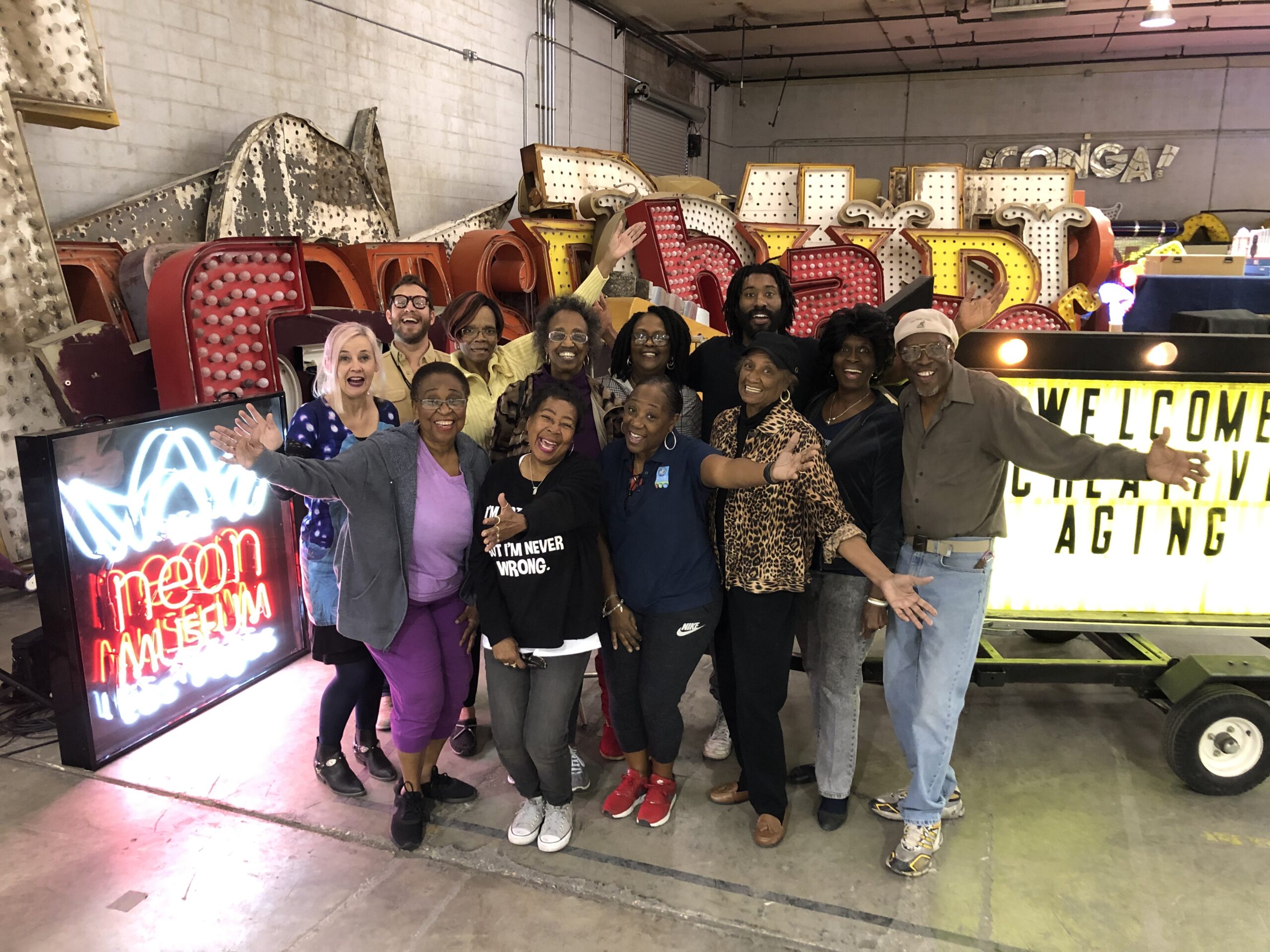 Creative aging program participants pose at the Neon Museum. Photo Credit: Neon Museum
Creative aging program participants pose at the Neon Museum. Photo Credit: Neon Museum
Earlier this year, older adults in Las Vegas, Nevada completed a visual arts course offered at The Neon Museum, a Seeding Vitality Arts in Museums grantee. Led by teaching artist Chase R. McCurdy and supported by Lance L. Smith and Danny E. Titus, the class focused on visual interpretation, including drawing, painting, and photography with Polaroid cameras. The course marked the first time the museum was able to partner with the Doolittle Senior Center, based in the heart of the historic Westside neighborhood of Las Vegas.
"To say the past month was inspirational is an understatement. I didn't even know I could put paint to paper. You're never too old to learn - we proved that." - Program participant
MOCA Tucson: Unpacking Personal History
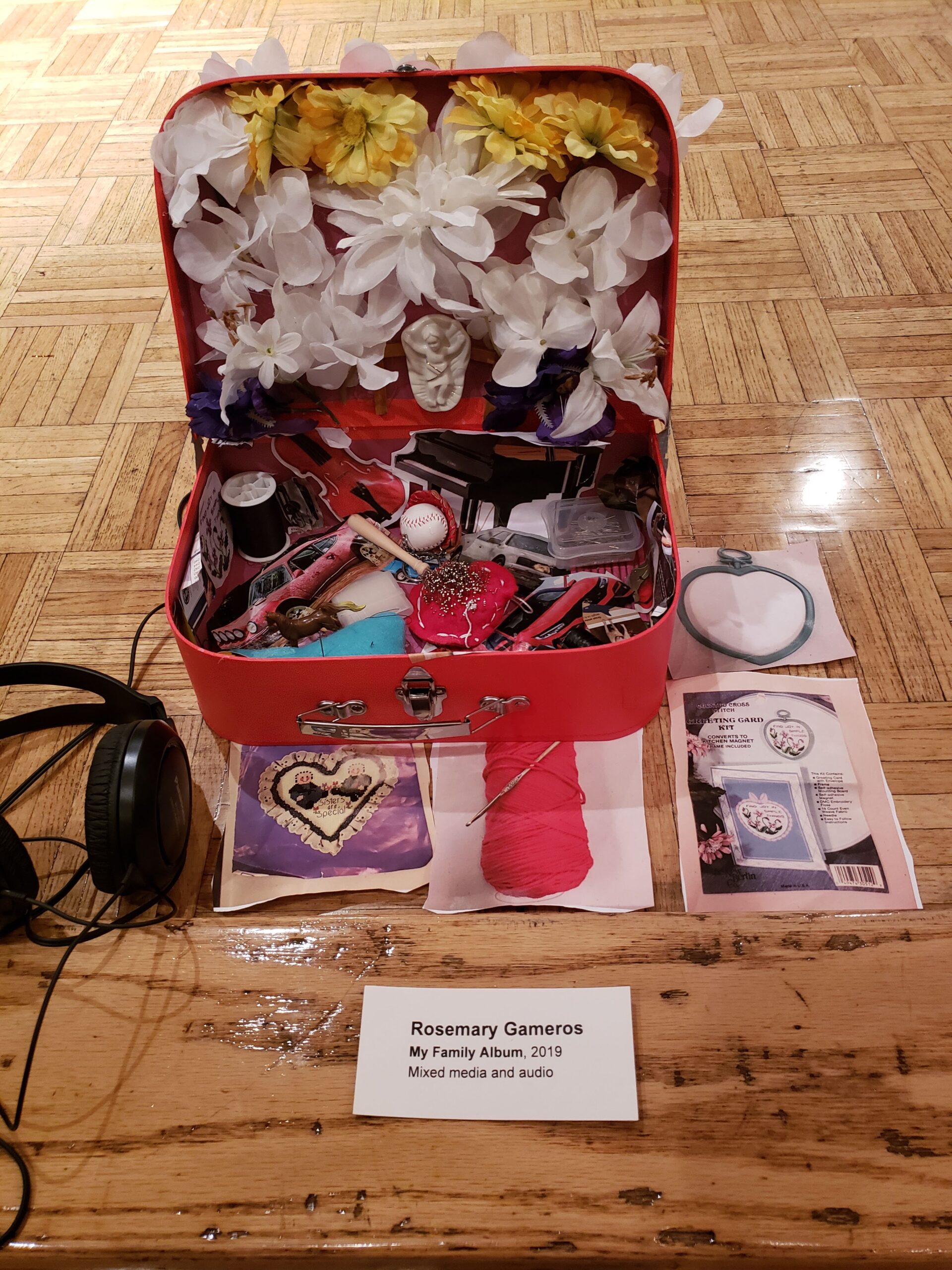
A suitcase on display at a MOCA Tucson’s Vitality Arts culminating event. Photo Credit: MOCA Tucson
Students 55+ at the Museum of Contemporary Art Tucson (MOCA Tucson) had the opportunity to share their personal stories in a unique creative aging course titled “Unpacking Personal History”. The museum, a Seeding Vitality Arts in Museums grantee, was inspired by the work of contemporary artist Mohamad Hafez in the development of this program. Participants designed and filled a suitcase with images and objects that held meaning for them in their personal lives and communities, and recorded a personal narrative to accompany the display. The work was showcased at a culminating event last winter, sharing the participants' knowledge of mixed media collage, installation and sound.
Visit moca-tucson.org for more information.
Pullen Art Center's Creative Aging Programs
Today on the Blog, Eliza Kiser shares the reasoning, design and implementation of the Pullen Arts Center’s creative aging programs in Raleigh, North Carolina.

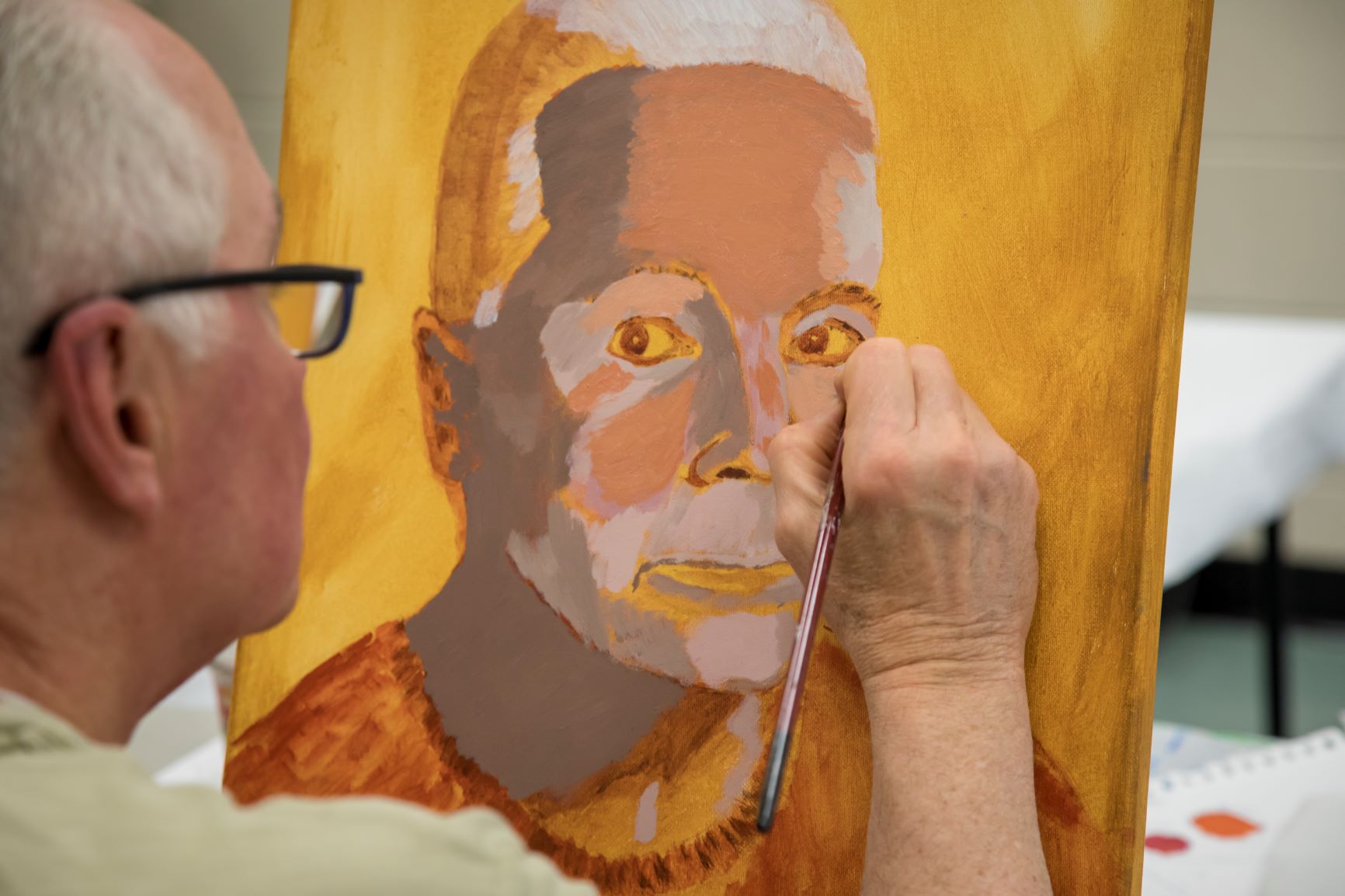
Pullen Arts Center creative aging participants. Photo credit: Teresa Moore
With a small but remarkable team, I serve my community as Director of Pullen Arts Center, a community visual arts center providing high quality, affordable visual arts classes and studio access in Raleigh, North Carolina under the umbrella of Raleigh’s Parks, Recreation and Cultural Resources Department.
When we began our journey into creative aging programming, by way of the National Guild for Community Arts Education’s 2017/18 Catalyzing Creative Aging Seed Grant program, here’s what we knew:
- As a municipal arts organization, we are committed to serving all of Raleigh’s citizens.
- Anecdotally, we observe 40 – 50% of our students falling in the broad spectrum of retirees from 55 – 95 years old, with our weekday morning and afternoon classes dominated by this age group.
- We work to achieve the “Creative Life” vision set for us by the community in the 2015 Raleigh Arts Plan: “Raleigh is a community connected through arts and culture, where every person is empowered to lead the creative life they envision.”
- The 2010 census indicates that approximately 16% of Raleigh’s 450,000 citizens are age 55 or older.
- The 2017 Raleigh Community Profile lists Baby Boomers as a growing segment of the population in Raleigh.
- Our 2014 Parks System Plan predicts that Baby Boomers will likely “age in place” in Raleigh due to climate and amenities, and the Parks, Recreation and Cultural Resources Department will have to carefully and creatively consider approaches to keeping these citizens active and engaged as they age.
In the Seed Grant, we saw an opportunity to take what we already did well, make it better and more intentional, build capacity to support creative aging across multiple roles in our organization, and to collect data that would lead us to wherever the next right place in supporting older adults in our community might be.
As a part of the Catalyzing Creative Aging Seed Grant, we received ageism and creative aging training, technical assistance in developing an ageism training for our organization, technical assistance in building the curriculum for our program, and funding to support the production of our 2018 creative aging program.
We called our program “Who are we? Raleigh’s People in Portraits.” Over 12 weeks, students learned the technical skills to draw and paint the human face, explored different historical and contemporary approaches to portraiture, and ultimately learned to tell a story about themselves by producing their own self-portrait to display in a culminating exhibition.
Because our physical space has been closed since November 2017 for a massive renovation and expansion, we’ve produced our creative aging programming in community centers throughout Raleigh’s geography. In Fall 2018, 60 older adults met in four locations with four different teaching artists; in Fall 2019, 83 older adults met in six locations with five different teaching artists.
If you were a student walking into one of these classes on the first day, here’s what you would experience:
You would walk into a community center not far from home – maybe it’s a community center where you already take yoga, drop off your grandkids at camp, attend community meetings, or go to vote. You’d find yourself among 10 - 15 other older adults, most of whom also have not participated in arts programs since high school. All of the art materials you might need would be there for you to use, along with a sketchbook for you to take home to practice and record your ideas. Your instructor is a professional teaching artist who cares about making sure that you are included, that your needs are met, and that you are supported in expressing yourself creatively.
After 12 weeks of the program, here’s what my team and I experience:
Utter joy and pride.
Some students have completed one portrait; some have created multiples. As we wire and organize the paintings into groupings, we find themes that tie together portraits of students in different classes who have never met one another. We hang each piece, print and alphabetize each artist’s name tag, send out the press releases, make last-minute changes to artists statements, and work with those two or three students who are going to complete and bring in their work hours before the opening to make sure everything looks good. When we unlock the doors to the exhibition space - a historic home in the center of the city - we see magic. We see kids, grandkids, neighbors, friends, co-workers, coming out in droves to support their artist (with 300 visitors attending 2019’s opening reception!). We see students getting lost in conversation with someone from another class whose work explored the same experience or feeling.
Throughout my life and through these creative aging programs, I’ve had the good fortune to be surrounded by many people whose lives have served as positive examples of how people get better, more complex, more confident, more joyful and less worried with age. I saw, but until recently couldn’t name, the disconnect between the way I saw people aging on television and the way I saw people aging around me -- ageism.
Until we had the opportunity to consider, understand and challenge ageism with the help of Lifetime Arts, ageism was off both my personal radar and my organization’s radar. What I learned is that ageism is very real, even in places that are successfully serving older adults, and it lurks from the parking lot to the program menu and bleeds into classroom interactions and onto the gallery walls. Ageism robs organizations like mine of the ability to see the individual strengths, skills, and needs of the people we’re serving; it robs us of the opportunity to create and be community.
When we started talking about ageism, our organizational storytelling began to shift in a way that’s proving transformational:
Our previous storytelling had focused on the art and the making. Now, our storytelling is focused on the artist and the maker.
Lately, I’ve been embracing my inner local government nerd-self and reading the writings of North Carolina’s Governor of the early 1960s - Terry Sanford. His core beliefs about people ring true and relevant to me in the context of making the case for Creative Aging; in his 1966 book “But What About The People” Sanford asks, “In one place after another all across the nation, we have come to realize that we cannot afford to waste our soil and rivers and woodlands. But what about our human resources? What about the people?”
Pullen Arts Center is a municipal organization, and, as such, our responsibility is serving our community. This program allowed us to discover a deeper, better way to serve by allowing us to see and understand the assets of our older adult students and to remind them and others how much they have to learn, to give, and to accomplish.
One of my most important possessions is a pair of glasses that belonged to my grandfather. He was always imagining the world that he wanted for his children, his grandchildren and his community. And, through those lenses, he could always see an opportunity to get closer to this world he imagined.
When I peek through those lenses, here’s the truth and opportunity I see:
Age comes with the gifts of stories, meaning, and context. Sharing the meaning we find along the way with others helps us build together a community that’s for everyone.
This blog post was written by Eliza Kiser, Director of Pullen Arts Center.
Pillsbury House + Theatre Visual Memoir Class
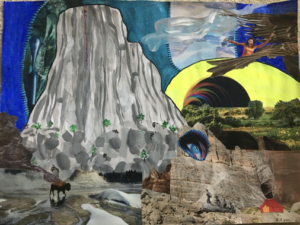
Created in a visual memoir course at Pillsbury House +Theatre, this artwork represents Sharon Lyon's matching story of climbing Devils Tower when she was 42. Photo Credit: Sharon Lyon
Aroha is proud to have supported Pillsbury House + Theatre's Vitality Arts programming as part of the Seeding Vitality Arts Minnesota cohort. Pillsbury House + Theatre offered Vitality Arts classes in visual memoir and playwriting for older adults in Minneapolis, Minnesota.
"The fact we were all over 55 (all the way up into 90’s!) was one reason [the visual memoir class] worked so well. People our age have so many stories and so much wisdom...it was wonderful to have a place where we could share and be appreciated. I’m eager now to return to some creative efforts I’ve let lapse this past couple of years." - Sharon Lyon, program participant
Create + Collaborate at LACMA
Aroha is proud to support the Create + Collaborate program at the Los Angeles County Museum of Art (LACMA), a Vitality Arts grantee. The program is a free, 10-session printmaking class designed for older adults to learn new skills and join a community of peers who share this interest.
“[I learned that] everything is possible. Age is unimportant. You can always learn. Now that I have time, I have time to create.” - Create + Collaborate participant
To learn more, visit lacma.org.
Creative Aging Performance Workshops at The Neon Museum
Adults 55+ and youth participate in a Vitality Arts course at the Neon Museum.
The Neon Museum, a Seeding Vitality Arts in Museums grantee, was recently featured in an American Alliance of Museums blog post. In the post, Arts Program Manager Joanne Russ describes the intergenerational Vitality Arts programming and shares participant comments, of which two are from the youth participating in the classes:
“It feels good because it’s something that I would not do every day…. It helped change me (to become) better because I learn from them—they know more than me…”
“Things that you’re freaking out about now, they can give you advice. It’s just nice hearing their stories and it helps you look forward to your own future.”
Visit neonmuseum.org to learn more.
GTCYS' Harmony Program
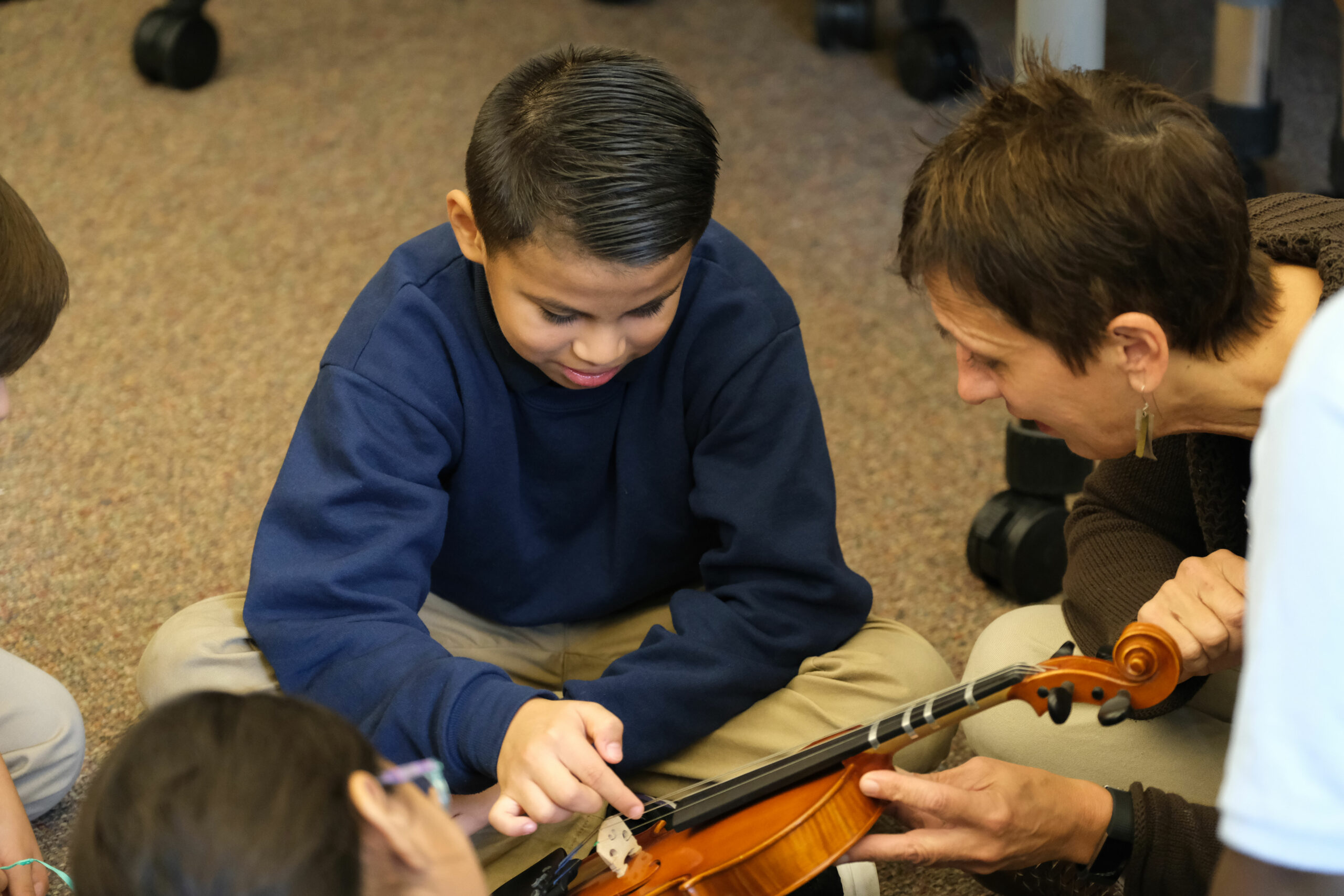
A Harmony student explores the violin with teaching artist Mary Sorlie. Photo Credit: GTCYS
Aroha is proud to support the Greater Twin Cities Youth Symphonies’ Harmony Program. Harmony is an extracurricular El Sistema-inspired program in partnership with Riverview Westside School of Excellence, a K-5 dual-immersion Spanish-English school on the West Side of St. Paul, Minnesota. At Riverview Westside, 93% of students qualify for free/reduced lunch and 96% are students of color. The Harmony program provides students in grades 3-5 with access to high-quality violin or cello instruction along with performance opportunities, which allows the students to share their musical accomplishments with friends, family and community. Four Harmony alumni, having moved through GTCYS’ Harmony program during their elementary school years, are now members of the next tier orchestra: Philharmonia East Orchestra. These four students are now experiencing the full impact of GTCYS’ holistic programming and building valuable skills and relationships to help them succeed in school and beyond.
To learn more about GTCYS and the Harmony program, visit gtcys.org.
The High Cost of Ageism
The High Cost of Ageism
Did you know that people who are ageist may live shorter lives? Becca Levy of the Yale School of Public Health has studied the effects of ageism for more than 20 years. She reports that those who held more positive self-perceptions of aging lived 7.5 years longer than those with negative self-perceptions. (Journal of Personality and Social Psychology, Vol. 83, No. 2.)
Can Ageism Make Me Ill?
According to Levy, the negative effects of age stereotypes on health outcomes, including stress, depression and a higher risk of heart disease, are well documented.
These beliefs also may be linked to brain changes related to Alzheimer’s disease. A major 2017 study studied age stereotypes of participants who had been measured decades before, when they were dementia-free. They found more instances of two physical conditions associated with Alzheimer’s in those who had negative age stereotypes earlier in life.
According to Levy, people take in a lifetime of ageist stereotypes, unconsciously direct them inward toward themselves and then act accordingly. Their behavior then reinforces these stereotypes, both in their own minds and those of people around them. It’s a self-fulfilling prophecy.
Medical research has often enforced these prejudices. British writer Anne Karpf notes that until recently, much of the research on aging has been conducted in nursing homes, despite the fact that the vast majority of older people don’t live in these less-than-stimulating environments. Research subjects simply haven’t adequately represented older people.
But are the Negative Stereotypes True?
No. A June 2018 report from the U.S. Equal Employment Opportunity Commission states:
Decades of social science research document that age does not predict one's ability, performance, or interest… Many older people out-perform or perform as well as young people, and intellectual functions can actually improve with age. While speedy thinking may decline over time, middle-aged brains adapt to reach solutions faster, make sounder judgments, and better navigate the complex world of today. Innovation and creativity span the age spectrum as well.
Positive Attitudes about Age Improve Health
Here’s the good news: people's positive beliefs about older people appear to boost their mental health. Levy found that older adults exposed to positive stereotypes have significantly better memory and balance, whereas negative self-perceptions contributed to worse memory and feelings of worthlessness. In fact, the positive-age-stereotype intervention even yielded greater physical improvements than a six-month exercise regimen. (McAuley et al., 2013)
Changing the Narrative
So why does all this ageist behavior continue? Cultural norms are slow to change. It’s hard to shed long-held beliefs, even when the facts show they’re false. But there’s hope. The World Health Organization has called for a global campaign to fight ageism, saying, “Combatting ageism presents a major opportunity for achieving healthy aging ... Experience with sexism and racism has shown that changing social norms is possible and can result in more prosperous, equitable and healthier societies.”
Are you lucky enough to already be an older adult? If so, you can help demonstrate the absurdity of ageism. Immerse yourself in positive images of aging and push conventional wisdom out the door. Learn something brand new. Ignite the creativity you didn’t know you had. Take improv or dance classes. Join a choir or a band. Join us in pushing back against ageism.
San Francisco Launches Ageism Awareness Campaign
San Francisco is one of the first cities in the country to launch a campaign to raise awareness of ageism. The campaign was developed after a review of the 2016 and 2018 Department of Disability and Aging Services (DAS) community needs assessments and recommendations from the Age-and Disability-Friendly San Francisco Task Force. Research from the Frameworks Institute also influenced the campaign.
The California Department of Finance indicates nearly 30 percent of San Francisco residents will be age 60 or older by 2030.
“When people think of our City’s reputation for innovation and vibrancy they often think of young people, but in fact older adults are the fastest growing age group in San Francisco. Their experience and energy are assets that we need to draw upon, not minimize,” said Mayor London Breed. "Negative stereotypes about older people hurt all of us, and cause us to miss out on the skills, intelligence, and other strengths that older San Franciscans contribute to our workplaces and communities.”
The San Francisco Reframing Aging Campaign was developed as a partnership of the San Francisco Human Services Agency’s Department of Aging and Adult Services, the Metta Fund, the Community Living Campaign and a network of over 30 community providers and advocates to disrupt negative stereotypes of older adults and connect residents with resources and services in the San Francisco area.
The community is encouraged to visit EndAgeism.com to learn more about ageism, read about local older adults making a difference in their community, discover volunteer opportunities and learn about available services.
You can view the campaign press release here. Visit EndAgeism.com for more information.
Supporting Teaching Artists with Creative Aging Trainings
In 2019, 100 Minnesota teaching artists participated in two teaching artist trainings in creative aging, co-presented by Aroha Philanthropies and the Minnesota State Arts Board, in partnership with Lifetime Arts. Today on the Blog, Sarah Drebelbis of Aroha Philanthropies describes the reasoning, design and impact of two successful training events held in Minneapolis, Minnesota.
Why Creative Aging?
For the past 50+ years, the work of arts and cultural institutions has centered on providing professional arts productions or exhibitions for audiences to enjoy. Today, the role of our cultural institutions is broadening to include facilitating the creative and expressive lives of our richly varied communities.
The older adult population is historically underserved and overlooked. Meanwhile, the number and percentage of adults in the U.S. who are 55 and older is growing dramatically. Today, about one in seven people in the U.S. are over 65. By 2030, it will be one in four or five. This group spans 50+ years of life, incorporating up to three generations of people with every level of ability, energy and potential.
Aroha champions programs that enable active older adults to learn, make and share the arts. These programs are based on the same arts education principles that drive youth arts education, including sequential skill-based learning over a period of time, but they are tailored to the unique strengths and needs of older adults. We hope to help people understand that aging is about growth, not just decline; about opportunities, not just challenges; and about the contributions older people can and do make.
Investing in Teaching Artists
One aspect of championing creative aging programs is supporting the teaching artists who lead them. According to the most recent Creative MN report, there are 108,755 creative and artist workers and 1,903 nonprofit arts and cultural organizations in Minnesota. To further the creative aging movement in our home state, Aroha developed a teaching artist training model to support, inspire and equip teaching artists on how to create successful, effective arts education programs for older adults. A diverse group of Minnesota teaching artists who are experienced in the creative aging field advised on the development of the training, which was led by Lifetime Arts.
Teaching Artist Trainings
In 2019, Aroha and the Minnesota State Arts Board sponsored two free two-day training opportunities for Minnesota teaching artists of all artistic disciplines and all levels of experience.
To garner interest and include teaching artists from across the state, an open registration period was held before 50 participants were randomly selected for each training. We saw an overwhelmingly positive response from Minnesota teaching artists, with more than 250 total lottery submissions.
The trainings included an exploration of ageism, a hands-on deconstruction of a creative aging workshop, a review of best practices in curriculum design and tangible ideas on how to include social engagement in all artistic mediums in creative aging programs. Participants had the opportunity to network and connect with peers interested in this field, hear from a panel of teaching artists who have experience working with older adults and see directly the impact of creative aging programs through live student performances and panel discussions. Presentations from the Minnesota State Arts Board and Springboard for the Arts shared grant opportunities and resources for teaching artists to support creative aging programming.
“There is lots to learn if you want to work with seniors. Aroha and Lifetime Arts have created a powerful, illuminating and fun training that will give you all the necessary knowledge and tools you need to be a successful teaching artist. You will learn about creating professional and concise curriculums, the do’s and don’ts working with seniors, developing successful partnerships and learn how to apply for [funding opportunities]. Teaching Artists of all backgrounds and experience levels will greatly benefit from this Teaching Artists Training in Creative Aging.” - Mike von der Nahmer, participant
Looking Ahead
Creative aging programs empower active older adults to dive into learning an art form in an environment that fosters community, friendship and engagement. By providing these trainings, our hope is that the 100 newly trained Minnesota teaching artists will advocate for and seek out opportunities to develop sequential, skill-building programs that engage older adults, both individually and within arts and cultural organizations across Minnesota.
For more information, please contact Sarah Drebelbis (sarah@wordpress-727831-2428852.cloudwaysapps.com).
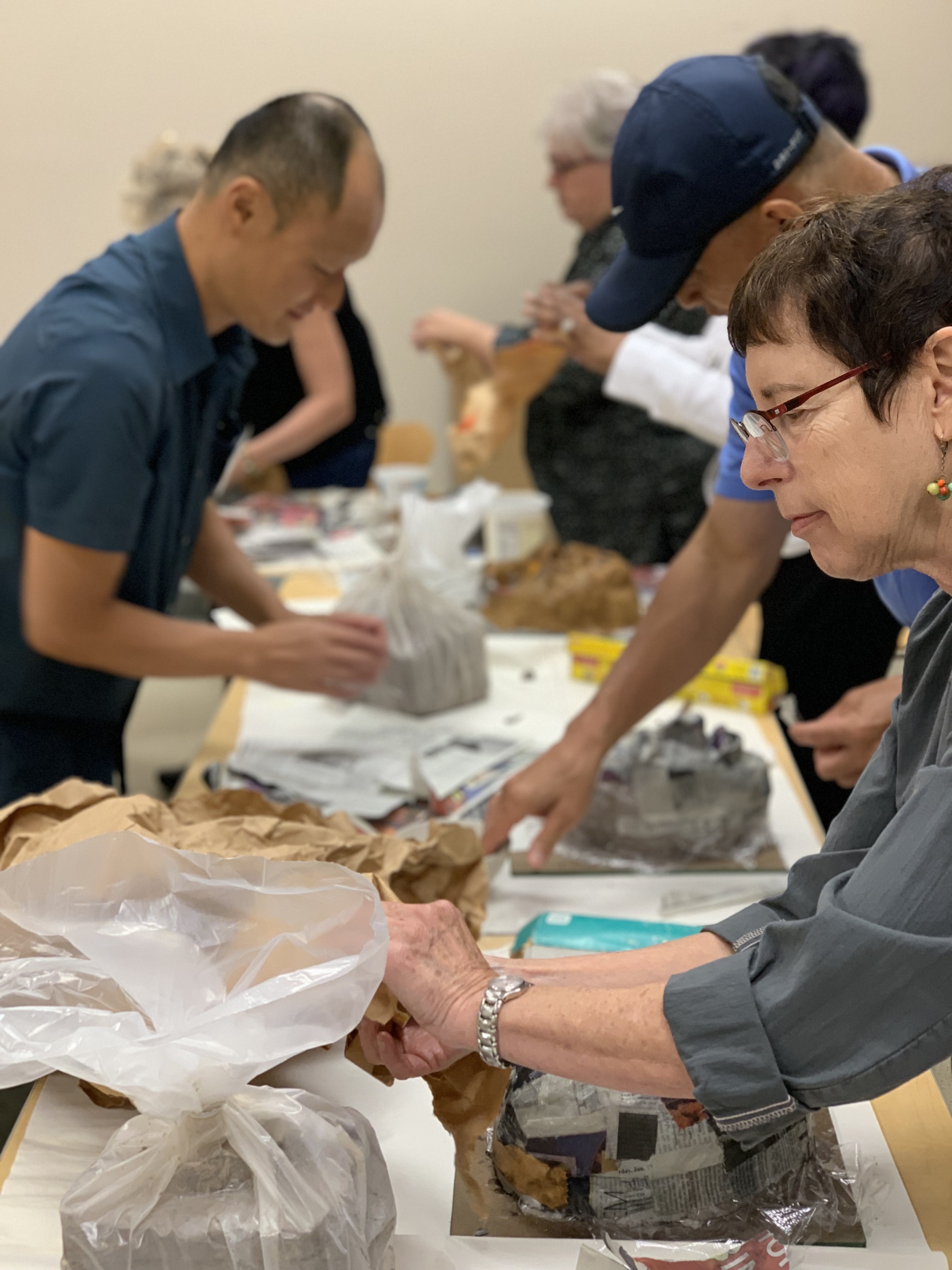
Training attendees participate in a hands-on creative aging mask-making workshop. Photo Credit: Sarah Drebelbis
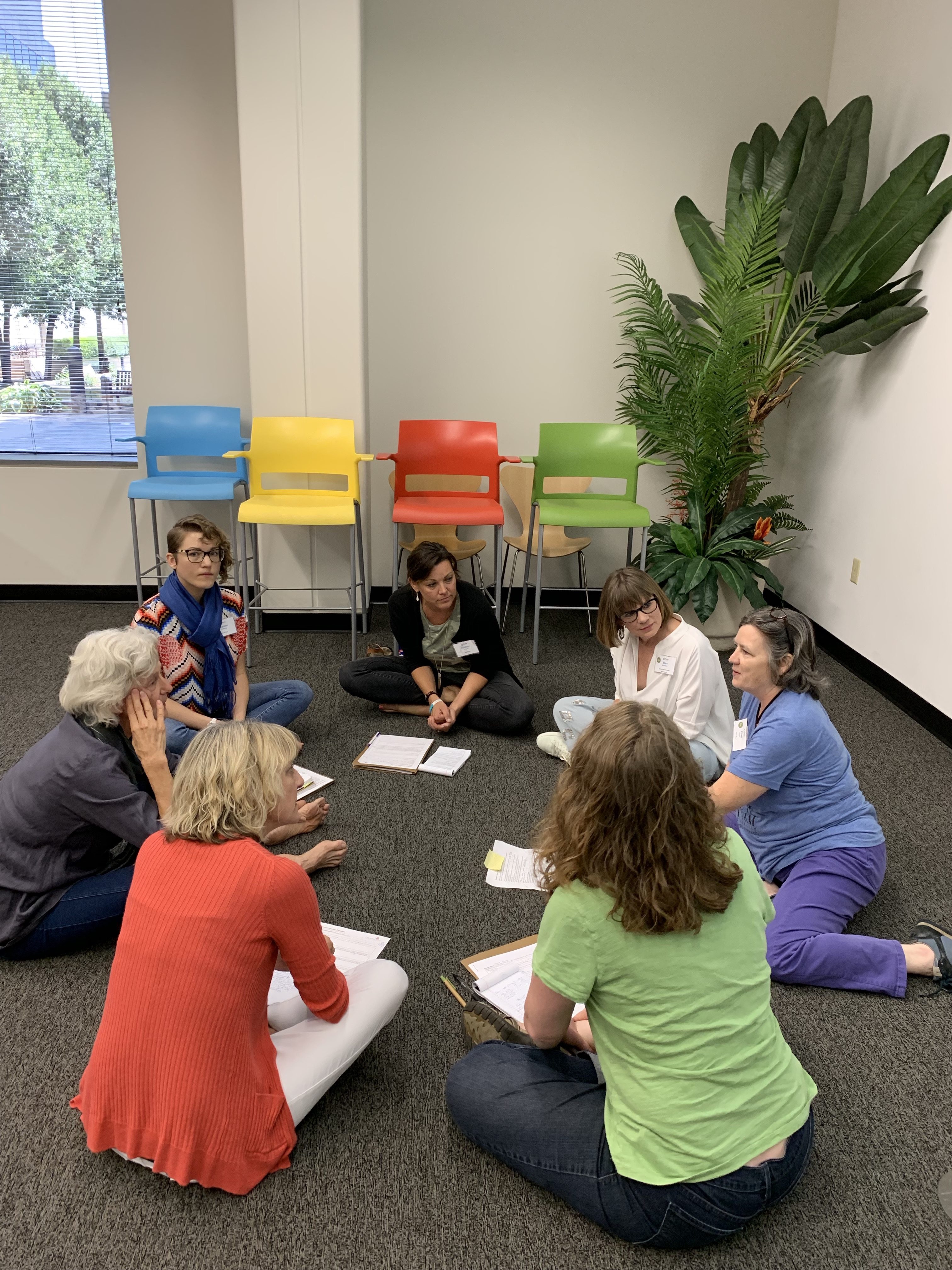
Training attendees participate in a creative aging curriculum design discussion. Photo Credit: Sarah Drebelbis
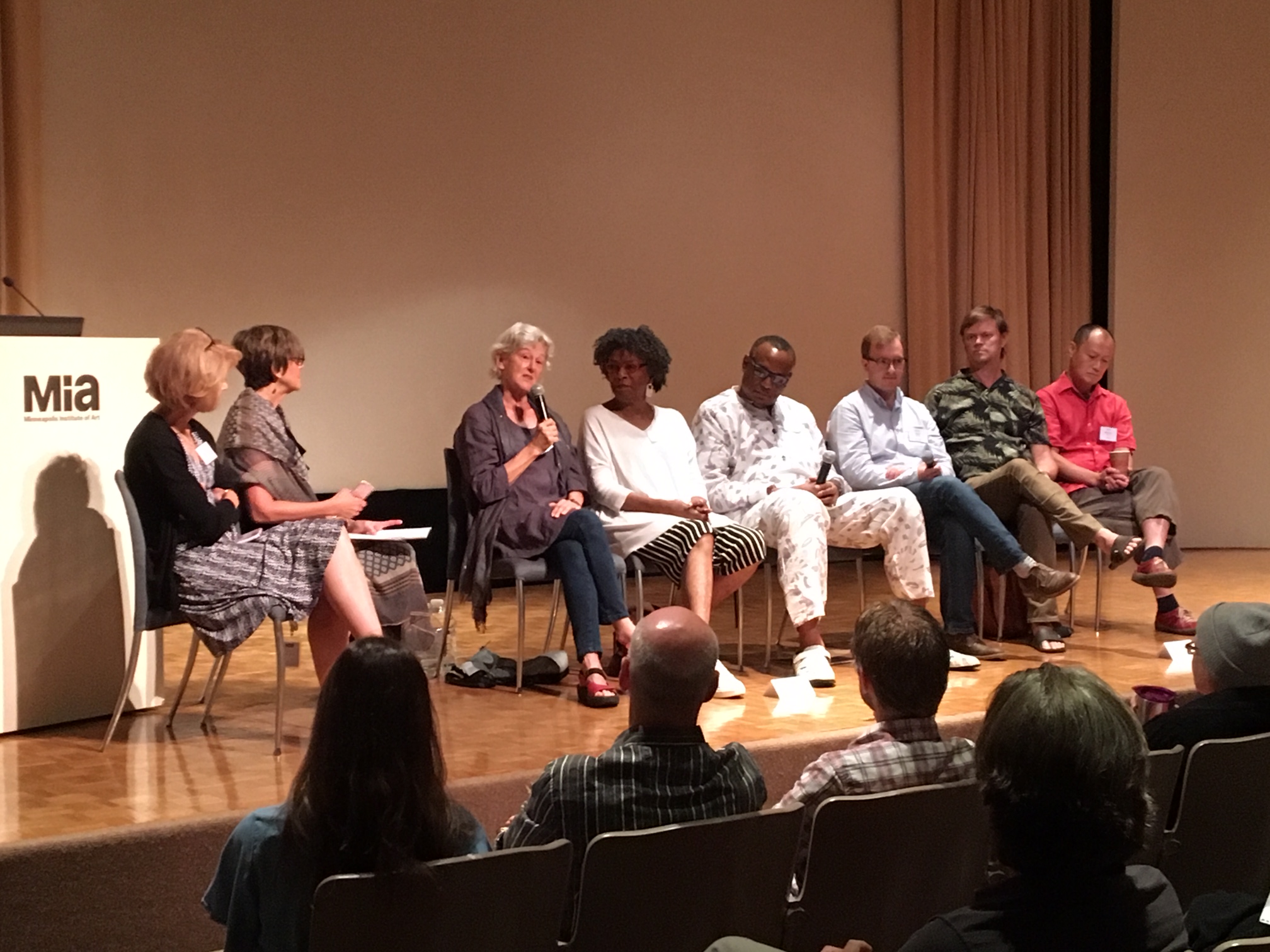
Experienced Creative Aging Teaching Artists share best practices during a panel discussion. Photo credit: Jacqueline DuMont
